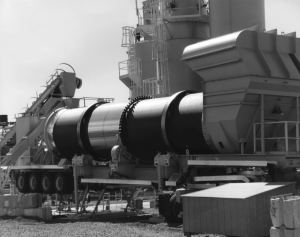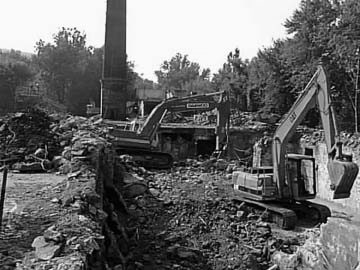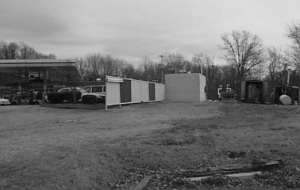|
III. Progress at Contaminated Sites (cont.)
Remedial activities conducted under state authorityCleanup activities at Non-NPL complex sitesComplex sites are defined as sites or subsites that require a full scale study, formal design and response to an unknown and/or uncontrolled source or release. These actions can be funded by responsible parties or with public monies. Progress at publicly funded subsites during SFY98 included the start of the following projects: 25 Remedial Investigation and Remedial Alternatives Analyses (RI/RAA); one Remedial Design (RD); nine Remedial Actions (RA); and two Operation and Maintenance actions. Furthermore, seven publicly funded Remedial Action projects were completed in SFY98, along with four Remedial Investigation/Remedial Alternatives Analyses and three Remedial Design projects. In terms of privately funded actions in SFY98, 41 Remedial Action Workplans were approved, which mark the beginning of actual cleanup work at these responsible party sites. Also, 52 privately funded Remedial Action Reports, which represent the completion of responsible party cleanups, were approved during SFY98. As of June 30, 1998, 150 publicly funded projects were underway, some of which began in previous years. In addition, 220 privately funded non-NPL complex projects also were underway at that time.
Focused Cleanup ActivitiesA focused cleanup is defined as a remedial measure, usually with no formal design phase, that consists of a focused response to a known source or release. The Site Remediation Program's Bureau of Field Operations, located in two regional field offices, oversees a large number of focused cleanups ensuring compliance with environmental laws and regulations. In SFY98, some 1,721 of these cleanups were guided to completion. There were 2,612 cleanups underway at the end of SFY98. A consistent increase in cleanups underway has occurred each year for the past three years.
Industrial Site Recovery Act CasesThe Site Remediation Program's ISRA group oversaw completion of 59 cleanups during SFY98; an additional 255 site cleanups were underway at the end of the state fiscal year. In addition, 434 "No Further Action" determinations were issued based on the results of site investigations or remedial actions performed satisfactorily prior to a property transfer.
Underground Storage TanksSignificant progress continued in the remediation of underground storage tanks in SFY98, with 947 cleanups or closures completed. Of the 947 tank actions, 522 involved discharges with soil and/or ground water investigations. The remaining 425 removals were tanks without discharges. Data from 1996 to 1998 reveals that more than 2,400 leaking underground tanks were removed during that time period.
Emergency Response and Environmental ActionThe Site Remediation Program responded to 912 emergencies during SFY98, an average of 2.5 emergencies per day. The Department "Hot Line" for reporting environmental concerns or discharge notifications answered 76,323 calls in SFY98, an average of 209 calls per day.
Memorandums of Agreement and Administrative Consent OrdersWhen the Division of Responsible Party Site Remediation knows the individual or parties responsible for contamination at a site, a cleanup agreement is discussed. Once an agreement has been reached, an oversight document is issued and signed by both parties. Document types vary depending on the circumstances. An Administrative Consent Order (ACO) is the standard control document issued for priority sites. A priority site is one where the Department will use public funds to conduct remedial activities unless a private party agrees to perform the cleanup. If public funds are used, known responsible parties unwilling to do the cleanup themselves will be directed to reimburse the state and may be required to pay three times the cost of the cleanup. A Remediation Agreement is a contract between an ISRA responsible party and the Department. A Remediation Agreement allows the ISRA triggering event, such as a sale, transfer and/or closing of an industrial establishment, to proceed prior to the actual cleanup. A Memorandum of Agreement (MOA) is executed when a responsible party, a land developer, or other cooperative party agrees to investigate and/or clean up a non-priority site or any portion thereof in accordance with the voluntary cleanup program. There were 10 ACOs signed by responsible parties in SFY98 at priority sites with a total of $6.2 million in estimated remedial costs. Also, 116 Remediation Agreements were executed by private parties during SFY98 with a total of $51.8 million in estimated remedial costs. The number of MOAs signed by private parties and local governments during SFY98 was 2,048, an 11 percent increase from SFY97 and a 43 percent increase from SFY96. It is important to note that there is not a one-to-one relationship between documents and sites or cleanups. One ACO could cover one or many sites and, conversely, an MOA could cover one site or a part of an overall site, such as only cleaning up leaking underground storage tanks at the location.
Environmental ClaimsThe Environmental Claims Administration (ECA) processes claims under the New Jersey Spill Compensation Fund (Spill Fund). The Spill Fund provides compensation to individuals and businesses that have suffered direct or indirect damage resulting from a discharge of hazardous materials such as petroleum products. In SFY98, ECA paid an estimated $1.5 million to compensate 182 claims for damages caused by discharges of hazardous substances. There were 35 administrative closures and eight claims denied. From SFY96 to SFY98, ECA paid more than $8 million dollars in compensation.
[ End of Report ]
|
||||||||||||||||||||||||||||||||||||||||||||||||||||||||||||||||||||||||||||||||||||||||||||||||||||||||||||||||||||||||||||||||||||||||||||||||||||||||||||||||||||
| To report an environmental
incident impacting NJ, call the Toll-Free 24-Hour Hotline |
||
Contact DEP | Privacy Notice | Legal Statement & Disclaimers | Accessibility Statement |
||
Site Remediation Program: SRP
Home | About SRP |
Search | Help Copyright © State of New Jersey, 1996- |



